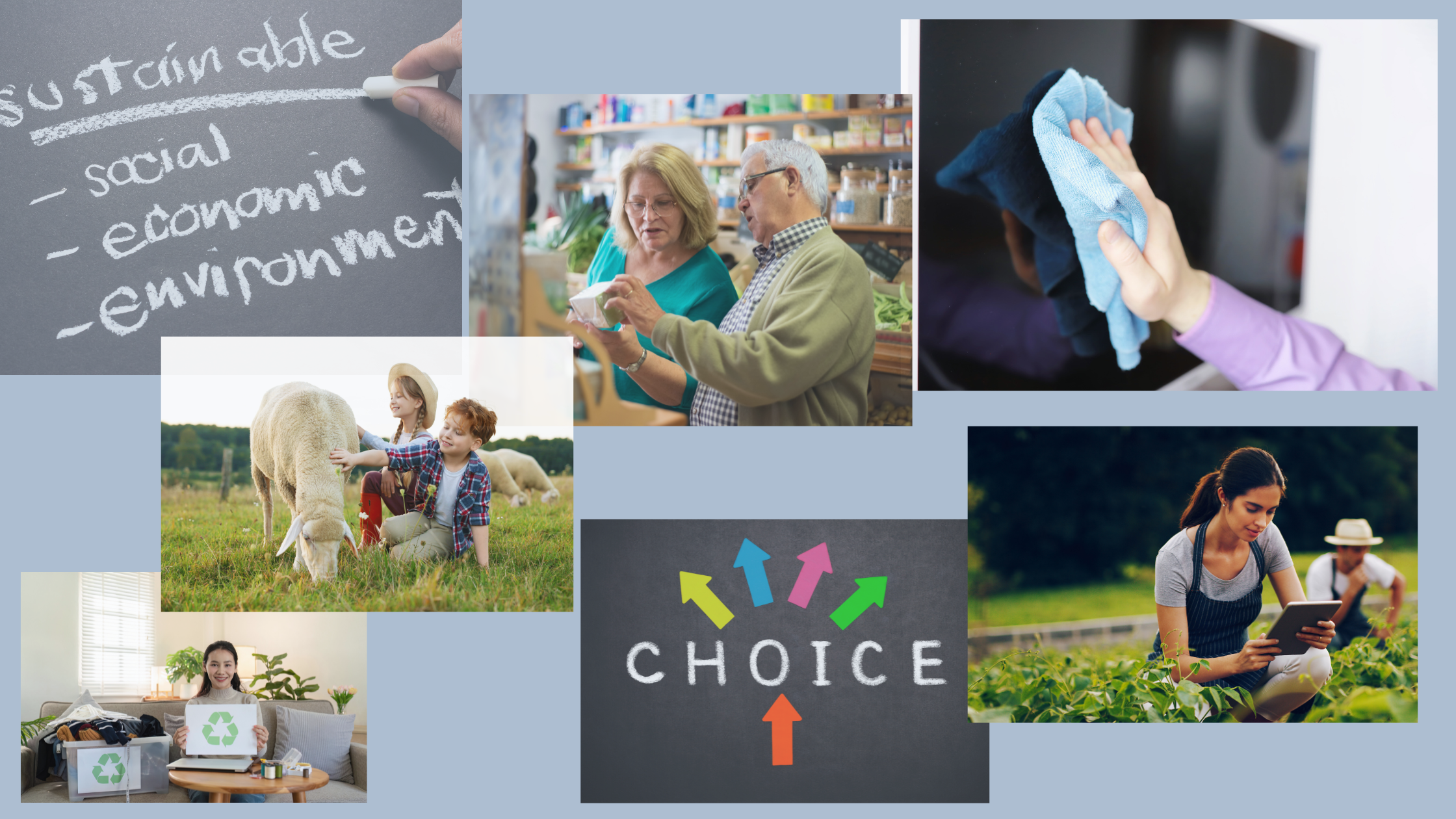Many of us diligently reach for our trusted household cleaners in the quest for a sparkling clean home. However, what often goes unnoticed is the residue these toxic cleaning products leave behind and its potential impact on our family members and pets. In this article, we delve into the importance of switching to non toxic cleaning products to mitigate the risks.
This blog will dive deeper, identify a few culprits, provide insights into the substantial health risks associated with this problem, and offer a few natural alternative solutions.
What are the Risks Associated with Chemical Residue Exposure?
- The residue from toxic cleaning products can contain chemicals, including volatile organic compounds (VOCs) and allergens. Children, with their lower body weight, developing immune systems, and very often hand-to-mouth activity, are more susceptible to these toxins, which can lead to respiratory issues, allergies, or skin irritation.
- Pets come into close contact with floors and surfaces where residue accumulates. They can ingest or absorb these chemicals through their paws or fur, potentially leading to skin irritation, allergies, or more severe health problems.
- Residue on dining tables, dishes, and countertops can transfer onto food, potentially leading to ingestion of harmful chemicals.
- Residue from cleaning products can emit unpleasant odors that linger in the home, affecting indoor air quality and overall comfort.
- Over time, cleaning product residue can cause surface damage on countertops, glass, floors, baseboards, and window sills, such as discoloration or etching.
The Culprits: Harmful Ingredients

To fully grasp the health risks and understand the importance of switching to non toxic cleaning products, we must familiarize ourselves with the harmful ingredients commonly found in household cleaning products. Here are a few of the major culprits:
- Phthalates: Just one of many chemicals legally hidden in the ingredient listed as "fragrance" of products, such as detergents, fabric softeners, soaps, shampoos, all-purpose cleaners, and of course, air fresheners. They are used as preservatives, mainly to make the synthetic fragrances last longer in the product, and are notorious for their association with adverse health effects. Phthalates have been linked to hormonal disruption. Our endocrine system plays a crucial role in regulating hormones in the body. This disruption in the body's hormonal balance can lead to various adverse health effects that can impact family members of all ages. Women with high exposure to phthalates while pregnant report significantly more disruptive behavior in their children, and further research by NIEHS has shown phthalate exposure can lead to thyroid dysfunction, congenital disabilities, breast cancer, triggers for diabetes and obesity. Some immediate effects may be sneezing, running, itchy nose, watery eyes, coughing, and itchy skin.
- Sodium Lauryl Sulfate (SLS): This is used as a surfactant and is frequently enlisted in the battle against grease and grime. SLS is found primarily in dishwashing and laundry detergents and all-purpose cleaners. SLS is potentially irritant to the skin, eyes, and respiratory system. Prolonged exposure to SLS can contribute to skin conditions, such as eczema, and exacerbate respiratory problems.
- Triclosan: You will find triclosan in many detergents, dish soaps, hand soaps, and bath soaps as an antibacterial and antimicrobial agent. However, its hidden menace lies in its potential to contribute to antibiotic resistance, rendering once-effective medications powerless against infections. Studies show that children exposed to abundant antibacterial compounds early are more likely to develop allergies, asthma, and eczema. Studies also show that triclosan interferes with the body's thyroid hormone metabolism and is an endocrine disruptor.
- Formaldehyde: A preservative often lurking in cleaning products, furniture, building products, personal care products, and even textiles. Formaldehyde is a silent assassin. It poses a grave cancer risk and is classified as a known human carcinogen by authoritative bodies like the World Health Organization (WHO) and the U.S. National Toxicology Program. Now, you will rarely see 'formaldehyde' actually listed as an ingredient on a product label. (How scary would that be?) But, in some chemical form, it is in the product.... Let's continue;
There is also a group of chemicals known as 'formaldehyde releasers', which are added to a product or created from a combination of chemicals added to development as a preservative. Formaldehyde releasers are volatile organic compounds (VOCs), pollutants emitted into the air that attach to dust particles and last for a long time. Because most of these products containing formaldehyde releasers are found indoors, EPA studies show indoor air contamination 2-5 times (sometimes up to 100 times) worse than outdoor pollutants. Formaldehyde releasers can all cause allergic reactions in the eyes, nose, throat, and skin, joint pain, headaches, and immune dysfunction, and may lead to asthma. It may also cause hormonal disorders in women, men, and children.
Neurological Effects: Emerging Threats
Emerging scientific research has begun to shed light on a concerning connection between the chemicals present in everyday household cleaning products and neurological issues. Specifically, growing evidence suggests that exposure to certain cleaning chemicals can adversely affect the nervous system, potentially resulting in cognitive decline and behavioral disorders. While the research is still in its early stages and further investigation is needed, these initial findings show the importance of taking proactive steps to minimize our exposure to these potentially harmful substances.
Cognitive decline, which includes conditions like dementia and Alzheimer's disease, has been a topic of increasing concern in recent years. Studies have suggested that long-term exposure to chemicals commonly found in cleaning products, such as volatile organic compounds (VOCs), may be linked to cognitive impairments. This is particularly alarming for older adults, as their cognitive functions may already be vulnerable due to aging. Furthermore, behavioral disorders, especially in children, have been associated with certain chemicals in the home environment. Children exposed to these chemicals may exhibit symptoms such as attention deficits and hyperactivity, which can have long-lasting implications for their development and well-being. While the precise mechanisms behind these neurological effects are not fully understood, the potential risks are clear. Therefore, proactive measures to reduce exposure to these chemicals are advisable, especially for families with young children and elderly members.
What benefits can we expect from choosing non toxic cleaning products?
Safer
Non toxic cleaning products are formulated without harmful chemicals such as ammonia, bleach, and synthetic fragrances. By avoiding these toxins, you reduce the risk of respiratory issues, skin irritation, allergic reactions, and other health problems associated with exposure to traditional cleaning chemicals.
Reduced environmental impact
Many non toxic cleaning products are biodegradable and made from renewable resources, reducing their environmental footprint. They break down more easily in the environment without leaving behind harmful residues or contributing to water and air pollution.
Improved air quality
Traditional cleaning products can release volatile organic compounds (VOCs) into the air, contributing to indoor air pollution. Non toxic cleaning product alternatives, on the other hand, emit fewer VOCs, helping to maintain better indoor air quality and reducing the risk of respiratory problems and allergic reactions.
Gentler on surfaces
Harsh chemicals in traditional cleaning products can damage surfaces over time, leading to discoloration, etching, or deterioration. Non toxic alternatives are often gentler and less abrasive, preserving the integrity of surfaces while effectively cleaning them.
How to minimize the risks of toxic chemicals in household products:

- Choosing natural, plant-based cleaning alternatives, like Momo's Secrets Simply Magic All-Purpose Cleaner and Deodorizer, can help mitigate these risks and contribute to a healthier home. Simply Magic leaves NO residue and contains zero chemicals or preservatives.
- Ventilation; fresh air can help disperse harmful airborne particles. Open windows and doors everyday for 10-15 minutes. Open blinds and curtains to let the sunshine in also helps break down the pollutants.
- Leave your shoes at the door; our shoes collect all the outdoor pollutants from the streets, ground, and floors we walk on all day. Don't track these pollutants indoors and spread them throughout your home, especially if there are children and pets in the home.
- Use detergent moderately; avoid overloading your washing machine or dishwasher with detergent. Using the recommended amount or a little less and running an extra rinse cycle will help prevent chemical residue buildup. Also, try switching to a natural product. I use Clean People in both dishwasher and for my laundry. I have also been pleased with Molly's Suds for laundry, but found their dishwasher pods did not rinse well. (my personal opinion)
In Conclusion:
The hidden dangers of harmful chemical residues from cleaning products are not limited to visible effects. Emerging research suggests that these residues may be linked to neurological issues, cognitive decline, numerous health issues, and behavioral disorders, raising concerns for individuals of all ages. Additionally, disrupting the endocrine system with certain cleaning chemicals can lead to hormonal imbalances that impact family members' health and development. By choosing to take steps, even small steps to minimize our family's chemical residue exposure, we can reduce these risks and create a safer and healthier home environment for our loved ones.
Note: This blog is not intended to bring gloom and doom. It is an informational tool to help your journey to a healthier home and family. We cannot make informed decisions without the facts. Knowledge is Power! Take one step at a time, Make one swap at a time. And, remember, Each step counts!
Sources:
Dodson, R.E., et al. (2012). Endocrine Disruptors and Asthma-Associated Chemicals in Consumer Products. Environmental Health Perspectives, 120(7),935-943
Vojdani, A. (2019). A Potential Link between Environmental Triggers and Autoimmunity. Autoimmune Diseases, (2019,1-18
Robertson, W. Davenport, et al. Design and Implementation of the National Institute of Environmental Health Sciences Dublin Core Metadata Schema
Environmental Toxins: How to protect yourself and your family
https://pubmed.ncbi.nlm.nih.gov/30546500
https://publichealth.berkeley.edu/news-media/research-highlights/carcinogenic-chemicals-associated-with-both-traditional-and-green-cleaning-products
https://toxicfreefuture.org/toxic-chemicals/formaldehyde
https://www.epa.gov/indoor-air-quality-iaq/volatile-organic-compounds-impact-indoor-air-quality




